Timelessness

Orbita
João Batista (PT), Noel Martins (PT), Pedro Gonçalves (PT), Hugo Rocha (PT)
Orbita is an open-world, virtual reality game developed to represent a futuristic point of view in which science and spirituality coexist. It uses puzzles to stimulate the player into exploring its environments. Confronting players with a futuristic possibility that does not rank science above spirituality (or vice versa), this game gives them a chance to understand the metaphors that underpin the main character’s journey.
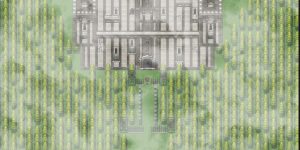
The Fortress
Andreia Batista (PT), André Fidalgo Silva (PT), Luís Morais (PT), Miguel Ribeiro (PT)
The Fortress is a story-driven video game for computers where choices and interactions explored within the game result in different outcomes. Its main mechanics correlate with social interactions: by switching between two characters with different personalities, the player needs to unravel the mystery of each puzzle/level of the fortress. The project was created under the aegis of the Multimedia Art Department and the Instituto Superior Técnico Master’s Degree in Games.
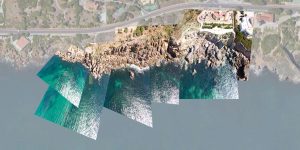
Frontiers || Territories
Joana Resende (PT)
Boundaries are constantly being changed, and those we find today may have already changed tomorrow. In a protected area of the Greater Lisbon area, aerial images are collected to build a map with open source software. These are shared through a website that is, itself, also a map, allowing for the visualization of economic, ecological and social while trying to see how well a territory / protected area is respected – “para mais tarde recordar” (for later recall).
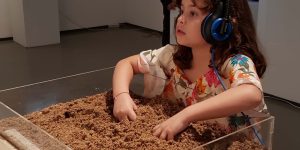
SandBox – Grains in Memory
Adriana Moreno (BR)
Sandbox is an interactive art installation that proposes continuous reflections on the human relationship between the sea and its identity paths. The installation consists of a corpus of sound memories based on the experiences of people who narrate their relationships of belonging with the sea. Memories – both “soundscapes”, a concept adapted from Schafer referring to sounds in the marine environment, and oral narratives recorded during fieldwork – are then revealed by moving wet sand in an instrumented box.
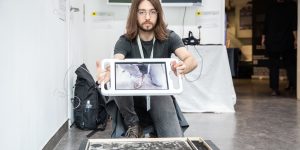
ARchaeologies
Pedro Soares (PT)
In Archaeologies, we’re faced with a sheet of paper in which an iconic picture from the past was engraved through folding. Observers may use the available materials to produce their own drawings while simultaneously revealing the hidden image. By observing the piece with an Augmented Reality app, we can see the strata that contain each individual citation made by the participants and how every new intervention is conditioned by the ones before it.
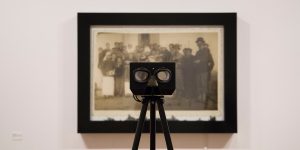
Wandering Gaze
Ana Teresa Vicente (PT)
The Wandering Gaze project explores the relationship between the observer’s gaze and an image through eye-tracking technology. The installation allows the viewers’ gaze to be materialized into a tangible path that will erode the surface of a photograph. The image is thus a performative space, as the viewers’ gaze is invited to wander about and explore it, contributing to the piece even while causing its deterioration. Developed with the technical assistance of MILL (Tiago Rorke, Maurício Martins and Pedro Ângelo).

TIMELESSNESS
Universidade de Lisboa, Faculdade de Belas-Artes
When Ars Electronica completes 40 years, we might be inclined to think that digital art is bound, by technology, to the time of its creation. Experiencing this selection in which drawings are excavated and expanded through augmented reality, however, a viewer’s gaze is allowed to degrade the photographic image, and the tangible or performative gestures of the audience are used to evoke memories or point to new directions. We realize that creativity can definitely transcend the technology used to build it. Calling upon temporality, space, and memory as key ingredients, Timelessness engages the participants on a journey through social, aesthetic, and temporal landscapes. The exhibition gathers artistic projects developed by undergraduate, masters, and doctoral degree students in the scope of the Multimedia Art Department of the Faculdade de Belas-Artes of the Universidade de Lisboa – FBAUL.

Inter Faces
Régis Costa de Oliveira (BR)
The Inter Faces performance uses augmented reality to replace the performer's body – including self-portraits – with digital images framed on a screen. The performers will act in a space that fuses the real with the digital. Their actions will likewise occur by crossing in between these two worlds, exploring simulacra and making it evident it from digital contents that seemingly appeal to us, even as it also makes clear how such temptations can exert a narcoticizing, hallucinogenic effect on us.


